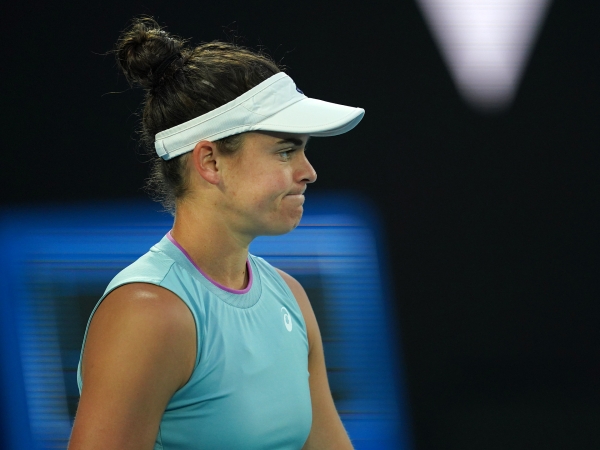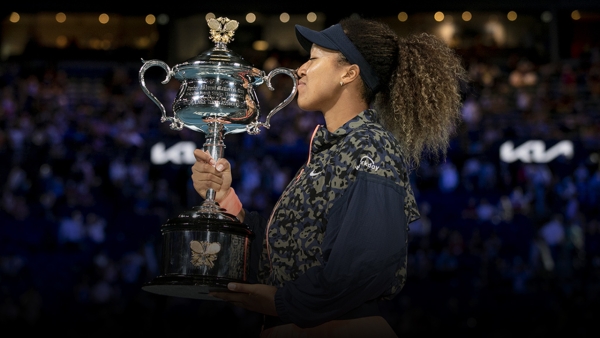Naomi Osaka stormed to her second Australian Open title over 22nd seed Jennifer Brady on Saturday night with a 6-4 6-3 victory, her fourth Grand Slam singles success.
MORE: Awesome Osaka races to second AO crown
In breezy conditions on Rod Laver Arena, here’s how the 23-year-old Osaka, who triumphed in Melbourne in 2019, overcame the American to earn a fourth major.
Key 1: Osaka’s serve on song
The world No.3 asserted herself from the start, firing a pair of aces en route to holding to love in a 77-second opening game. She went on to land six aces to Brady’s two, and produced the fastest serve of the encounter at 197km/h.
MORE: Osaka v Brady match stats
Despite landing only 48 per cent of first serves, the powerful right-hander had a higher winning percentage of both first and second serves than Brady – 73 per cent and 55 per cent respectively, compared to her opponent’s 62 per cent and 42 per cent.

Osaka double-faulted twice – including once to set up Brady’s first break point which the American seized – but that’s a number she minimised by intentionally taking pace off her second serve. On average, it landed at 125km/h, slower than Brady’s 141km/h.
Key 2: Osaka’s return game
Osaka won marginally more return points than Brady, which enabled her to create scoreboard pressure and posed questions that her opponent, previously untested in Grand Slam finals, was unable to answer.
In just the second game of the match, Osaka clawed back from 0-40 to deuce, and unable to break, she planted a seed of doubt across the net. A similar charge from 15-40 in the tenth game enabled Osaka to break and take the set 6-4.
In the second set, she attacked Brady early, breaking twice for a 4-0 lead. That cushion proved pivotal, and although Osaka handed a break back, it was enough to seal victory.
Key 3: Osaka’s rock-solid composure
Osaka’s nerves of steel have already been showcased this fortnight – she saved two match points against two-time Grand Slam champion Garbine Muguruza in their fourth round tussle. Again on Saturday, the Japanese star showed no signs of being rattled, even after Brady broke back to level the opening set. As the American’s forehand found its range, Osaka stayed cool under pressure, interchanging calm exhalations with a few “C’mon!” cheers even as Brady fought her way into games.
Key 4: Brady’s untimely errors
The American served four double faults during Sunday’s final, including one to give up the first break point of the match. That’s roughly a quarter of her total of 17 through her seven matches at AO 2021. Brady won only two points in her first two service games of the second set to find herself in a double-break deficit at 0-4.

The 22nd seed was also unable to control her unforced error count, which ended at 31 to Osaka’s 24. Crucially, some of these came at inopportune moments, including shanking a forehand to give Osaka a look at set point in the opener. She then dumped a straightforward forehand into the net to hand Osaka a one-set advantage, which quickly turned into a 0-4 second-set hole for the American.
The American also didn’t attack on points she otherwise might, responding to a relatively slow 128km/h Osaka serve with a slapped forehand that sailed long to set up championship point.
Key 5: Osaka takes her chances
Both players created break opportunities, but it was Osaka who stepped up and seized the most crucial of points – and equally, landed one of her 16 winners to fend off one break point.
Osaka converted four of her five break-point chances compared to Brady’s 50 per cent (two from four); that’s a number that will disappoint the American, given she managed 67 per cent, 70 per cent and 100 per cent conversion rates through her fourth round, quarterfinal and semifinal respectively.
